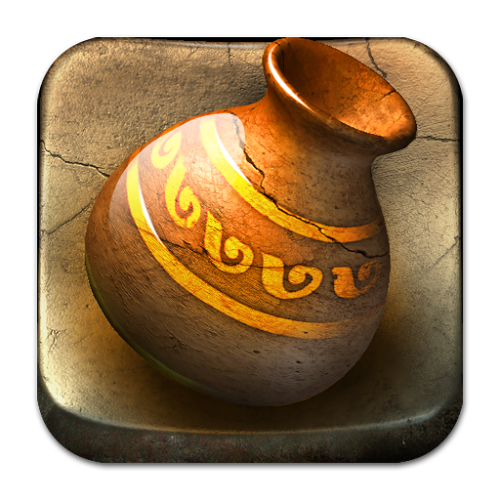
Some earthenware clay can look quite smooth and refined when it’s been fired. However, earthenware clay can also be yellow, white, and tan, or buff. This is because it often has a high content of iron oxide (2), which is essentially rust. What Does Earthenware Clay Look Like?Ī lot of earthenware clay is red or orange. An average firing temperature for low fire clay is around 1950F or cone 04 (1). If you’d like to know more about this, have a look at this article.ġ479 -2109F are the extreme ends of the low fire spectrum. This is a way of classifying the ranges of firing temperature. When potters refer to the cone a type of clay is fired, they are talking about the pyrometric cone system. Another way of putting this is that earthenware clays are normally fired between cone 015 and 1. The temperatures at which low fire clay is fired at ranges from between 14F (804-1154C). What is Earthenware Clay?Įarthenware clays are low fire clays. Other examples include this low-fire white clay and raku clay. However, there are various different types of earthenware clay, of which terracotta is one. Terracotta is the lovely rich red-colored clay that is often used to make plant pots and the like. When people talk about earthenware clay, they are often actually talking about terracotta clay.

So, with that said, let’s look at the different types of clay for pottery… Different Types of Clay for Pottery – Earthenware Clay Or if the temperature gets very high, the clay may even melt into a puddle on the kiln shelf. If the kiln goes beyond that temperature, the clay may start to bloat up. There is a sweet spot when firing different types of clay at which the clay has matured. When earthenware has been fired, it is still ceramic. Being porous does not however mean that earthenware will dissolve. Other clays such as earthenware are porous and less hard, even when they have matured and become ceramic. Some clays, such as stoneware and porcelain become very hard and non-porous when they mature. Different types of clay for pottery mature at different temperatures. Once clay has become ceramic in the kiln, it is said to have ‘matured’. Other clays can only cope with lower firing temperatures, and these are called low fire clays. Some clays can withstand very high temperatures, these are called mid or high fire clays. Different types of clay can cope with different levels of heat. One of the main differences between various types of clay for pottery is the temperature at which they become ceramic. This is one of the differences between pottery and ceramics. Firing clay involves heating the clay to high temperatures.ĭuring the firing process pottery clay is transformed from clay that can dissolve in water, into hard insoluble ceramic material. This is because part of the process of making pottery involves firing it in a kiln.

Pottery clay is also known as ceramic clay. If you would like to jump to a particular section, use one of the links below to take you directly there.Ħ.2 Final Thoughts on Types of Clay for Pottery I will also take a look at ball clay and fire clay. In this post, I will be giving you an overview of each of these main types of clay for pottery. Porcelain fires at high temperatures and is usually pale grey or white. Stoneware fires at mid to high temperatures and is often buff or tan. Earthenware fires at lower temperatures and can have an earthy look.

These are earthenware, stoneware, porcelain, ball clay, and fire clay. There are five main types of clay for pottery. I will look at what they are made of, what they look like, and what they are like to use. In this article, I will take a walk through the main different types of clay for pottery. This information can feel overwhelming, so I thought it would be helpful to give a clear overview of the key differences. If you’re starting out in ceramics, you may be wondering about the different types of clay for pottery. As an Amazon Associate I earn from qualifying purchases.


 0 kommentar(er)
0 kommentar(er)
